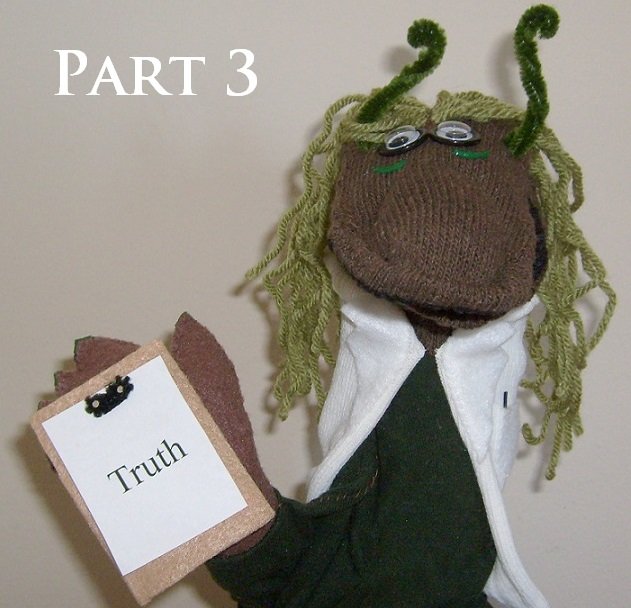
In my youth I used to believe in the existence of ghosts, psychic powers and all things paranormal. Did my beliefs fit in with good evidence leaning towards their existence? They did not, but I didn't know that. I was too absorbed...
Lucky for me, as I grew up and became interested in science, those beliefs dispelled one by one. We all engage in 'magical' thinking at some level. I think we should not allow ourselves to, but of course, it remains up to the individual to decide what to do with their life.
For those wanting to become educated in good thinking, for those who want to be able to spot the baloney and the potential intentions towards deception in other people's claims and arguments, and for people who are interested in sound reasoning, Carl Sagan and Michael Shermer propose their baloney detection kit, a set of questions that one should ask when in doubt.
I will discuss one or two questions per each post in this series. Here are the previous posts:
1. How Reliable is Your Source
2. Tracking Down Pseudoscience - Part 2
Today, I'm going to get into questions 4 and 6 from the baloney detection kit, leaving the rest of the questions for future posts in this series.
Baloney Detection - Points 4 and 6
Questions 4 and 6 refer to how claims fall into the bigger picture and where the majority of evidence for a claim points to. Let's get into them specifically.
Question 4: How does the claim fit with what we know about how the world works?
I'll outline the example presented by Michael Shermer:
Some people enjoy discussing about the potential mysteries behind the Egyptian pyramids. They like to think that the pyramids were built by an intelligent long-gone civilization, by the inhabitants of Atlantis, a fictitious continent, or even by aliens.
They couldn't have been built by Egyptians: pyramids are so complex structures. Hmm, of course they are complex, when you look in retrospect. But as Shermer says:
"They're just a pile of rocks. Egyptians had a lot of free time, a lot of cheap labor; it never rains; they had centuries to build these pile of rocks...Come on, it's not that complicated."

You can always sniff the non-sense out of such claims by looking at the bigger picture. If those amazing pyramids were built by higher (above human) intelligence, let me ask some pertinent questions:
"1. Where are the rest of their marvelous artifacts?
2. Where are their clothes? Where are their tombs?
3. Where is their trash and where are the tools they used?"
Of course, current archeology does not support such preposterous claims. But people engaging in deception, conspiracy and magical thinking can be more harmful, dangerous, and cunning than those making so harmless and naive claims. So, you have to be prepared.
Put every claim in its appropriate context, look at the bigger picture, look at how the world works, look at the sobering hard facts and do your interpretation.
Question 6: Where does the preponderance of evidence point?
In a discussion with another steemian, I argumented that whatever belief, theory, or claim you make, you can always find a few studies to support it. There are at least ~2 million studies published in peer review journals every year.
Make your claim, find the studies, fool the uneducated masses...
Of course, the trained eye does not fall for it. Most studies are junk. It's not easy to conduct good research. It is not easy to detect and interpret good research. You need to skill yourself in math, statistics, and logical fallacies, to name a few. And people hate these topics. We are innately leaning towards innumeracy (we are bad with numbers); we are not creatures of reason; instead we're creatures of rationalization...
Detecting bunk in claims is, therefore, challenging for most people.
Here's how Shermer exemplifies point 6:
"The theory of evolution, for example, is proved through a convergence of evidence from a number of independent lines of inquiry. No one fossil, no one piece of biological or paleontological evidence has “evolution” written on it; instead tens of thousands of evidentiary bits add up to a story of the evolution of life. Creationists conveniently ignore this confluence, focusing instead on trivial anomalies or currently unexplained phenomena in the history of life."
Good science does not make extraordinary claims unless backed by extraordinary evidence.
Pseudoscientists, quacks, and people who want to deceive you will often make such claims, exploiting your cognitive biases and your lack of mathematical skills.
As Shermer puts it:
"In a way, science is like solving a crime. The guy never confesses, right? So, you have to piece together the evidence that's available...
Is it this guy, or is it that guy? Did this happen, or did that happen?
The way criminologists work is they try to look at the mass of data they have and see if they can build a case against one individual or another."
Educating oneself in science is probably the best way to understand the world in which we live. Adopting math, stats, rationality, and critical thinking skills will arm you with one of the strongest arsenal to steer through a world of non-sense.
To stay in touch with me, follow @cristi
Credits for Images: [Adapted from Durova CC BY-SA 3.0 via Wikimedia Commons] and [The Richard Dawkins Foundation via Youtube].
#psychology #practical #science
Cristi Vlad, Self-Experimenter and Author
